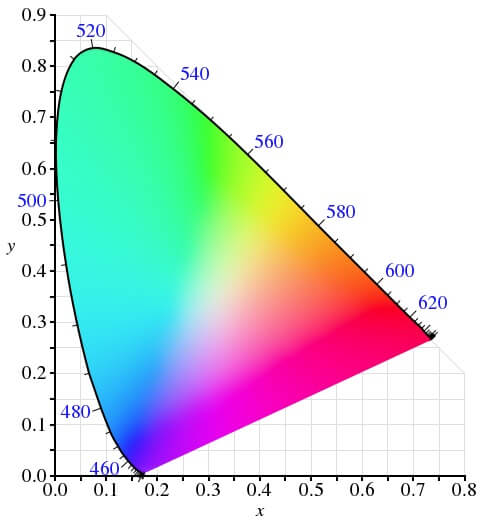The Primary Colors of Pigment and Light
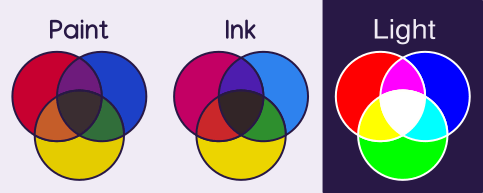
Contrary to popular belief, primary colors cannot make every single other color, just a wide range that covers many colors.
The range is quite impressive for only three colors, but primaries do miss pigments. If you've mixed yellow and blue paint in school, trying to make green, you likely noticed that you could only get a dull dark green. You can get a better result with yellow and cyan, but a green pigment itself will be more vibrant.
Lets look at primary colors for pigments first, since we are more familiar with them in using paint.
Primary Colors for Pigments
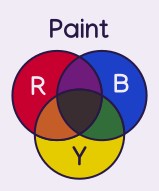
In early education we are taught that the primary colors red, yellow, and blue can make every single other color. This simplification is a good introduction, but many do not learn further than that. Artists and graphic designers begin to question this set of primaries when they encounter the primary colors that printers use.
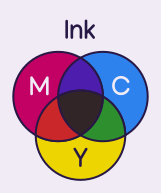
Printers use cyan, magenta, yellow and black ink. Ideally an equal mix of cyan, magenta, and yellow would create black, but its not perfect, and black ink is much cheaper than layers of colored ink.
Both RYB and CMY follow the subtractive color model, which means at each additional pigment, the darker the resultant color gets. Ideally an equal mix of primary colors will create black. The more transparent the material is, the truer to reality this is, thus transparent dyes can approximate black better than opaque paints.
So which are the real primary colors? Well both, or neither. They both can function as primary colors, but neither can make every color, because no three colors can.
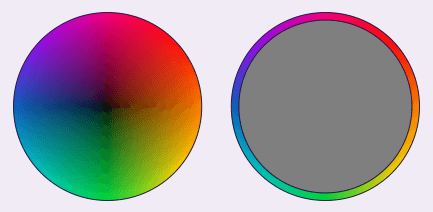
Imagine that this circle represents all colors of pigments. The edge is all fully saturated colors, and the inside is their mixtures. If we draw a line from one edge of the circle to another, we will see how those two colors mix.
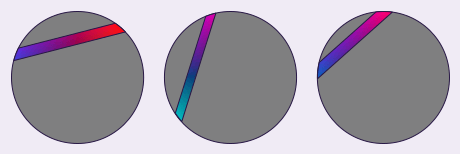
Red and violet make a dark magenta purple. Cyan and magenta make a dull blue that turns into some nice purples towards magenta. Blue and magenta make nice saturated purples. The rest of the colors on the circle are blocked out since the two colors on the edge can't make any other colors but the ones between each other.
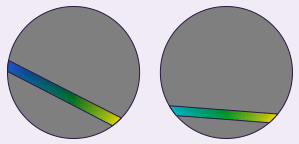
Blue and yellow make a dark dull green. Cyan and yellow make a brighter green.
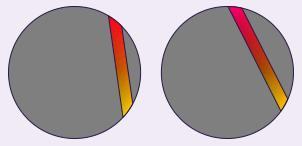
Red and yellow make a good orange. Magenta and yellow should make a good orange too, but these diagrams are just illustrative; they do not caputure the effects perfectly.

Here are a few other colors and how they would mix. The same concept applies to three colors, but now because there are three points, it will make a triangle of colors those three can make, rather than just a line.

Here are two different primary sets often used for pigments: Red, yellow, blue (first circle) and cyan, magenta, yellow (second circle). The points represent the primary colors, the colors within the triangle are those the primaries can make, while the colors outside of the triangle are those that cannot be made by the primaries. The small circles are just highlighting the secondary colors that each primary set can make. Note how they are not as saturated as the same hue would be on the edge of the circle.
The third circle shows the overlap of the two sets of primaries. These are the colors that both of the primaries can make.

Theoretically you could make a set of primary colors with any three colors. Here are what we typically consider secondary colors acting as primaries (orange, green, and purple). Note how they can make red, blue, and yellow, just that they are darker and duller than we are used to. Keep in mind that the orange, green, and purple made by RYB are also darker and duller than their pure counterparts, we are just more accustomed to seeing them that way.
The second circle uses red, blue and green as its primaries, resulting in dull yellow, purple, and teal. Again, we are not accustomed to seeing yellow so dark, so we often use it as one of the primary colors (like in RYB or CMY).
The third circle shows a triangle made of magenta, red, and orange, which doesn't cover much of the circle. To cover as much area as possible, the triangle's points should be spaced evenly appart.

We can also have more than three primary colors, which signifigantly expands the range of colors we can make. Once we get past six primaries, however, the less area more primaries will add, as the shape gets closer to that of a circle.
Again, this circle of color is just an illustration, not meant to accurately detail the actual "shape" and distribution of colors humans can see.
Primary Colors of Light
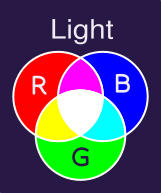
Like how red, yellow and blue are considered the "primary" colors for pigment in traditional media, red, green, and blue (RGB), are used as the primary colors for digital screens. Just like the traditional primary colors cannot make every pigment in nature, RGB does not cover every saturated color of light. This is particularly noticeable with teal.
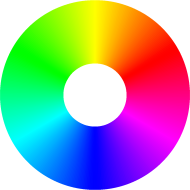
Notice how the cyan, magenta, and yellow colors on this RGB wheel are all lighter than the other colors. That is because, as a mix of the primaries, they are not represented by their own wavelength, but a mixture of two, making them lighter than their fully saturated single wavelength counterparts. The cyan here would actually be more of a deep teal color if it weren't a mixture.
Unlike pigments, colors of light follow the additive color model, meaning the more wavelengths blended together, the lighter the color is. An even mix of wavelengths should make white light. The absence of light results in black.
These are chromaticity diagrams, which illustrate the wavelegths of light (the rounded outter rim) and how they mix (the inside) to make every visible color of light. Since magenta and warm purples do not have their own wavelengths they are represented by a flat line between red and violet.
The triangle in the second diagram is made by standard RGB colors (sRGB). The colors outside of the triangle are colors the sRGB primaries cannot make. Notice how on the triangle's edge magenta, cyan, and yellow are closer to the white center than the primaries are, showing why they are lighter. Cyan is especially close to white. On the outer rim of this diagram, as a pure wavelength, the cyan hue would be a rich teal color.
Keep in mind that these diagrams are displayed on a digital screen which uses an RGB display, thus the colors shown outside of the triangle can't actually be displayed, the colors shown are just substitute colors from RGB.

Unlike pigments, any colors other than RBG would be impractical as primary colors, due to the fact that the visible spectrum is a line rather than a circle (warm purples and magenta don't have pure wavelengths), meaning one primary should be on one end (blue/violet), one should be on the other (red), and one should be in the middle (green).
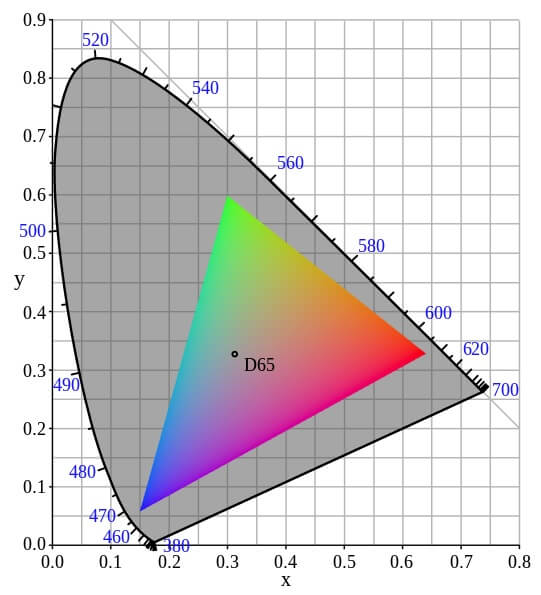
Now the exact colors chosen to represent RGB can (and do) vary. Notice how the green primary in the sRGB diagram is near 555 nm, but the peak of the arc is near 520 nm. Some color gamuts do cover a larger range of colors.
Suggested Next Pages: What Determines Color? Refraction in Prisms and the Rainbow
